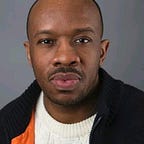Hip-Hop Turns 50 Years Old
This year, the cultural phenomenon called hip-hop turns fifty years old. A year older than I am, it was once called a fad. People were saying hip-hop was not going to last. Elders were thinking it was something temporary we young Black and brown people were creating in the ghetto. They had no idea it would turn into what it has become — a global, multicultural, and multigenerational phenomenon you hear or see everywhere.
When I was growing up on the west side of Rockford, Illinois as a youth, all of sudden hip-hop arrived. It came out of nowhere, or so I thought. I found myself instantly connected to what hip-hop was. The early hip-hop movies Beat Street, Breakin’ 1 and Breakin’ 2 introduced to me all of the cultural, creative elements that make up hip-hop. I sat and watched, glued to the television, young Black and brown people move their bodies in a amazing, agile, fluid ways. Immediately I joined the movement and began breakdancing too.
More than breakdancing, it was the music, rap music, I become stuck on.
I am a music lover. My ear is quick when it comes to noticing great music. When I heard early rap artists such as UTFO (Untouchable Force Organization), Roxanne Shante’, Run-DMC, Kurtis Blow, the Fat Boys, LL Cool J, and many others, my mind was blown. Here I am, walking in my west side neighborhood, hearing all kinds of hip-hop language in easily digestable songs with beats to make your head nod. The lyricism, the lyrical pictures painted about the ghettos, the struggles of Black and brown people in the ghetto, the magnetic force of the music captured me.
My older brothers were playing hip-hop music in the early eighties. By the time I was nine years old they had record players and albums. They played all of the early rap music with pride — thumping it loud outside on our porch and inside our house. Wherever I went in those formative years of mine on the west side I could see and hear hip-hop.
I remember hip-hop transforming our communities, especially the way were thinking. Rappers were having conversations with Black and broen people coast to coast. Rap music became a way for educated street poets and prophets to convey messages to us, to identify with us in ways that made us one in the struggle for equity. Rap was the new code in the ghetto such as the songs slaves sang on plantations to share information or to get themselves free.
Melle Mel and Grandmaster Flash’s “The Message” was the main code back then, it still is this very day. “Rats in the front room roaches in the back/Junkies in the alley with the baseball bat.” For those of us who grew up in the ghetto, we all could relate to these harsh and extreme situations.
As a former breakdancer I remember learning the moves it takes to be a breakdancer. There were other youth in my community who mastered breakdance moves also. We found ourselves in breakdance ciphers, each getting our turn at showing our moves — highlighting the moves we were best at or enjoyed performing the most. In Fairgrounds Housing Development on the west side of Rockford, Illinois is where you found us mastering breakdancing. I wound up in a crew called Beat Street named after the movie.
Throughout my teenage years and into my adult life I have remained close to the culture of hip-hop. Regarding the element known as Knowledge, I have been in and out of crews or ciphers where we exchanged knowledge about who we are, what we represent, spirituality, and politics. At Rust College in Holly Springs, Mississippi I co-founded a group called the Sungod Foundation. Every day, as we enjoyed early and mid-1990s rap music, we shared the knowledge we possessed with one another. We built our minds with deep reaching subjects and topics.
As we walked across campus to various destinations, we were seen or known as the hip-hop guys. We wore baggy Karl Kani or Maurice Malone jeans. We had Timbalands on our feet. Blasting out of our dorm room in Davage Smith Hall was the best rap music we could get your hands on back then. We even performed at the school’s talent show. We rapped over an instrumental while some of us performed breakdance moves. We were all locked in to the culture. Most of us still are.
I am listening to old school rap music in my car a lot these days. It is taking me back to those early times. I get excited when I hear a song on the radio I hadn’t heard in a while or when I hear a rap song I have never heard. I am excited for hip-hop. I am elated we get to say we made it this far. I am happy for all of the hip-hop loving people across the globe. We get to be proud of what we created. We get to celebrate hip-hop in meaniful ways. We get to post on social media hip-hop songs, fashion, videos, graffiti art, or knowledge about the culture or what is going on in society these days. Fifty years from now who knows what it will look like. But look what we have built.
